Chinese Skylon Sabre engine? Looks somewhat similar with the heat exchanger and everything.Some presentation slides on CASIC's single-stage-to-orbit (SSTO) spaceplane project.
The project will study and explore several configuration schemes (ranging from 100-ton to 640-ton takeoff weight) and their associated power requirements, carry out verifications of the Yunlong engine, and study and nail down the real-world requirements for SSTO spaceplane. A special emphasis will be paid to the 240-ton and 480-ton configurations, which are expected to require two and four Yunlong engines (60-ton thrust), respectively. The project aims to realize the capability to launch 7.7 to 19.2-ton to LEO, which will cover most of China's satellite launch needs as well as manned and cargo missions to the Chinese space station.
Much progress has been made on the 480-ton takeoff configuration, including aerodynamic design and parameters such as dimensions and mass distribution. The length of the spaceplane is 95.6m, wingspan is 30m, the fuselage slenderness ratio is 13.9, and the total fuselage volume is 2779.6 cubic meters, of which 1861.7 cubic meters are dedicated to propellant (67% of the total volume).


You are using an out of date browser. It may not display this or other websites correctly.
You should upgrade or use an alternative browser.
You should upgrade or use an alternative browser.
China's Space Program Thread II
- Thread starter Blitzo
- Start date
PeoplesPoster
Junior Member
Just read 中国空间站GNC系统设计与在轨验证 CSS GNC system design and test in orbit. Thanks to @by78.
There was a suggestion or question regarding why wasn't the lab module docked directly to the radial port using thrust. I had answered it as saving the fuel. From reading the paper I made two thoughts:
Moving the lab module from the axial port to radial port after docking does not need thrusters, but only rely on the CMGs. The CMGs only need electricity from the solar panel. This eliminate the need of fuel and also the thrusters which have service lives. Changing the CMGs RPM gives a turning force that will naturally move modules around the center of mass of the combined structure.
This also means that the lyappa arms are the best in doing the job of redocking because it is a mechanical structure that rotates in the desired path without any control while CMGs are doing the moving. A robotic arm alone will move the modules but is unable to keep the desired orientation of the complex, that still need CMGs and/or thrusters. The robotic arm is only a back up if CMG controlled moving failed.
There was a suggestion or question regarding why wasn't the lab module docked directly to the radial port using thrust. I had answered it as saving the fuel. From reading the paper I made two thoughts:
Moving the lab module from the axial port to radial port after docking does not need thrusters, but only rely on the CMGs. The CMGs only need electricity from the solar panel. This eliminate the need of fuel and also the thrusters which have service lives. Changing the CMGs RPM gives a turning force that will naturally move modules around the center of mass of the combined structure.
This also means that the lyappa arms are the best in doing the job of redocking because it is a mechanical structure that rotates in the desired path without any control while CMGs are doing the moving. A robotic arm alone will move the modules but is unable to keep the desired orientation of the complex, that still need CMGs and/or thrusters. The robotic arm is only a back up if CMG controlled moving failed.
Last edited:
China launched Shiyan-16A, Shiyan-16B and Shiyan-17 trio satellites by CZ-6 rocket from Taiyuan Satellites Launch Center in 07:50 UTC+8, Sept 27, 2022.9月27日7时50分,长征六号运载火箭在太原卫星发射中心点火起飞,随后以“一箭三星”方式,将试验十六号A星、B星,试验十七号卫星送入预定轨道,发射任务取得圆满成功。
▲ 长六火箭起飞(顾航瑜 摄)
长征六号运载火箭由中国航天科技集团有限公司八院抓总研制,为三级构型运载火箭。本次任务中,长征六号运载火箭首次采用煤油提前加注技术,进一步优化了试验队的工作效率。
▲ 长六火箭奔向苍穹(顾航瑜 摄)
长征六号运载火箭于2015年9月20日首飞,是我国新一代运载火箭家族的探路型号。截至目前,长征六号运载火箭已圆满完成10次发射任务,其中9次为“一箭多星”发射。
▲ 火箭起竖
试验十六号A星、B星由中国航天科技集团有限公司八院抓总研制,试验十七号卫星由中国航天科技集团有限公司五院抓总研制,该组卫星主要用于国土普查、城市规划和防灾减灾等领域。
▲ 长六火箭整装待发
本次发射是长征系列运载火箭的第440次发射。
This group of satellites is mainly used for land survey, metropolitan planning, disaster prevention and mitigation, etc.
It's the 10th CZ-6 series launch and the 440th CZ series launch, also the second launch within 12 hours.
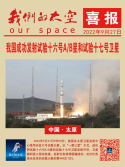
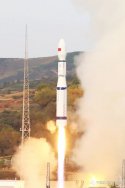
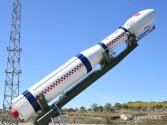
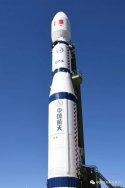
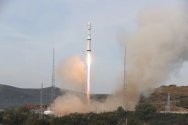
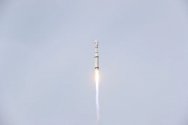
Last edited:
This LM6 has a bigger 2.9 diameter fairingChina launched Shiyan-16A, Shiyan-16B and Shiyan-17 trio satellites by CZ-6 rocket from Taiyuan Satellites Launch Center in 07:50 UTC+8, Sept 27, 2022.
This group of satellites is mainly used for land survey, metropolitan planning, disaster prevention and mitigation, etc.
It's the 10th CZ-6 series launch and the 440th CZ series launch, also the second launch within 12 hours.
View attachment 98289
View attachment 98286
View attachment 98287
View attachment 98288
View attachment 98290
View attachment 98291
Landspace unveils upgraded, assembly Tianque-15A engine for Zhuque-2 second stage, with a reduction of 400 kg from the TQ-15 engine currently to be used..
On September 25, 2022, the "Tianque" family vacuum liquid oxygen methane engine - TQ-15A completed the first assembly at the Huzhou Intelligent Manufacturing Base, and is scheduled to be delivered to the test bench for test run assessment on October 8.
The TQ-15A will be put into use as the second batch of secondary main engines of the Suzaku-2 rocket. The engine and TQ-12A general-purpose turbo pump, valve, gas generator and other key components adopt the pump front swing scheme, the vacuum thrust reaches 836kN, and it can achieve 60%~110% depth variable thrust, and the overall performance has reached the international advanced level..
Compared with the current Suzaku-2 rocket secondary engine, its advantages are as follows:
- The cancellation of the tour machine reduces the complexity of the system and reduces the weight by about 400kg;
- With ±4° two-way rocking function, attitude control can be performed without traveling machine;
- It has the functions of three ignitions and depth change, which can meet various ballistic requirements;
- Using the pump front swing layout scheme reduces the pump-push spacing and improves the compactness of the structure;
- The turbo pump uses end face sealing technology to reduce the leakage rate and simplify the rocket launch process;
- The turbo pump is changed to a two-stage turbine, which improves the efficiency and reduces the size of the engine;
- The turbine exhaust is introduced into the extension of the thrust chamber nozzle, which improves the specific impulse performance of the engine and reduces the lateral force of the engine.
In the future, with the application of TQ-15A, the cost of the Suzaku-2 carrier rocket will be reduced while the capacity will be further improved to meet more types of launch needs and meet the requirements of the commercial development of future launch vehicles.



